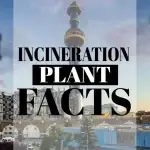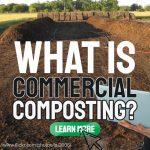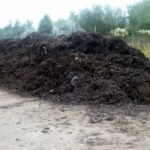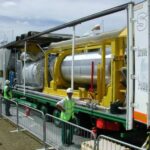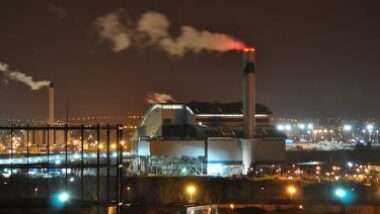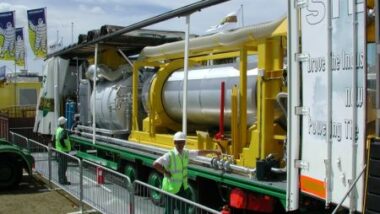Progressive cities and many urban centers around the world are now installing large-scale in-vessel composting systems as part of their total MSW management.
Large scale in-vessel composting, which makes high quality compost through the use of enclosed “reactors” that closely monitor temperature and oxygen levels throughout the biodegradation of organic materials, is popular.
In-vessel composting systems generally contain all their process air and liquids so that they can be captured and treated prior to discharge.
Using in-vessel composting, the mixture is mechanically “churned” and moved along bays, or moved from one tunnel to another half way through the in-vessel stage.
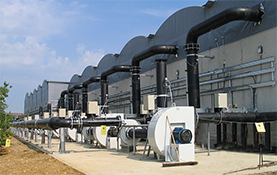
The heat stabilizes the material and further neutralizes potentially harmful bacteria while maintaining the right temperature for beneficial, “composting” microbes to do their work
The following items must be considered when estimating costs for a specific in-vessel composting facility: C C Land acquisition.
Equipment procurement, of these plants, entails the production of a detailed specification which should include at least the following:
- land acquisition
- composting vessel, loading equipment, conveyors,
- air supply equipment,
- temperature monitoring equipment, and
- odour control equipment. Operation and maintenance labour.
- energy (electricity and fuel for equipment)
- water and wastewater treatment
- equipment maintenance and upkeep
- product distribution expenses and marketing revenues
- regulatory compliance expenses such as permitting, product analysis, process monitoring, record keeping and reporting.
(The above is not necessarily a complete list.)
In rotating vessel in-vessel composting plant designs agitation and aeration are performed by the vessel. Since they are normally fully enclosed, in-vessel composting systems do not usually emit the foul odours often associated with some other composting operations. Odour in the exhaust air is vented through a biofiltration system which removes the odour before it is discharged.
Environmental benefits of producing and using compost include the recycling of a valuable resource, reduction of dependence on chemical fertilizers, and offsetting the use of natural resources such as trees or peat moss as mulch material.
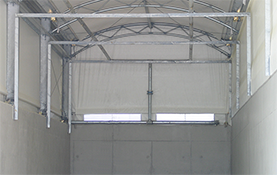
Some versions are known as vertical compost units (VCUs), and they rely on gravity and the upward movement of ventilation air to provide movement. The compost then needs to be further processed once it has matured and is ready for selling, to make good saleable compost.
This is often done by passing it through a screener, such as a Powerscreen 615 trommel with a half-inch screen to separate the remaining larger woody material and any other contaminants that escaped earlier detection. Oversized material (often called “overs”) are composted again and inert material not suitable for compost use can be are used for daily landfill cover.
In-vessel composting involves larger capital costs than Windrow or Aerated static pile but needs less land and labour.
After the waste is processed in-vessel it must cure for an additional period which might be 90 days or a similar period, before it is ready to be used as a soil amendment.
Air is forced into and circulated through the box from a series of holes within the floor. It is recycled continually until the carbon dioxide concentration in the reactor reaches, (in some designs) four percent by mass, which triggers the release of the reactor air and the introduction of fresh air.
Incineration Plant Facts
A first of our waste incineration plant facts is that a “burner” (this being the derogatory term of the anti-incinerator capaigners) is an important facility for the preservation of public health as it involves protecting the environment in a number of ways. Unless the waste materials are properly disposed of by the waste incinerator plant, […]
What is Commercial Composting?
We were recently asked; “What is Commercial Composting” and since one person asked we wrote a definition, as follows below: Commercial composting is the composting carried out principally as a method of waste disposal that diverts this organic waste away from landfills. If the feedstock is green waste or another “MSW residual waste” organic material […]
Windrow Composting
Windrow composting is a way of generating compost by piling organic matter into extended rows or arc-like piles. The piles are turned over by large machinery to preserve even levels of heat, humidity, and oxygen content. Piles will usually range from four to eight feet tall and 14-16 feet in length. Windrow composting is a […]
Autoclave Technology for Municipal Solid Waste Management
Autoclaving is defined as a form of Mechanical Heat Treatment (MHT) which takes place as a batch process and comprises steam processing of residual MSW, in a vessel under the action of pressure. This is contrasted with other MHT waste treatment technologies which are continuous and don’t involve pressurization. Autoclaves have for long been used […]
